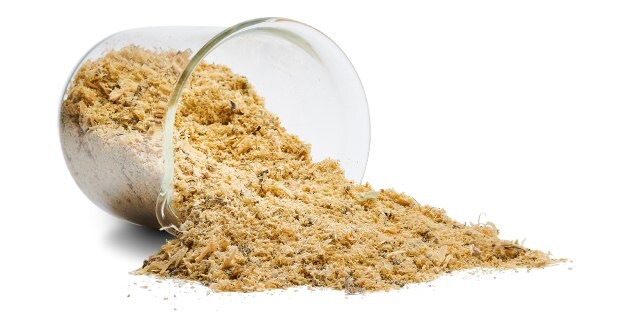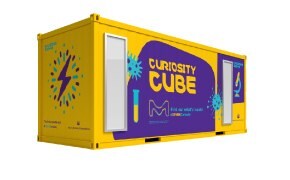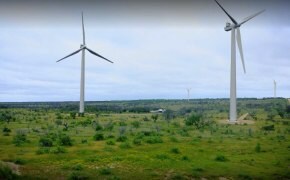Powered by Sustainability
Earth Month: Powered by Sustainability
Better Research for a Better Tomorrow
Our sustainability journey sprouted at the heart of our business: our product portfolio. Life science products do not immediately reach the end consumer, so this industry has historically had less pressure to integrate sustainability into products. However, these products are the building blocks of many products we encounter daily.
Our Life Science business takes a holistic sustainability approach across the value chain to address rising customer sustainability requirements, enable sustainability progress across our suppliers and reduce the impact of scientific research globally.
Sustainability Quantified, Impact Multiplied: 2023 Impact at a Glance
37%
Reduction in Scope 1 & 2 Emissions
2,500+
Greener Alternative Products and counting
50,000+
Students reached through Curiosity programs
150+
Green Chemistry Commitment signers
1.39M
Liters of fossil fuel-based solvents avoided
2,176
DOZN™ tool users

Greener Alternative Products
Now more than ever, scientists are looking to us for innovative sustainability solutions in the lab. We are integrating sustainability thinking in our company to enable our customers to make more sustainable decisions for their business and reach their sustainability goals. To determine which products qualify as Greener Alternative Products, we quantify sustainability improvements across key impact areas.

The Future of Solvents is Bio-Based
Made from wood byproducts like twigs or sawdust, Cyrene™ is 98-100% renewable, with a carbon footprint approaching zero. Beyond its production impact, Cyrene™ is readily degradable in natural exposure conditions, decomposing 99% to carbon dioxide and water within 14 days. Under normal lab conditions, it will remain shelf stable. Cyrene™ was also designed for safety, showing no concerns as a reproductive hazard or mutagen, which is often the cited concern for DMF and NMP, making it safer to handle.
Sustainability is a Journey
We’re transforming the industry by helping our customers reach their own sustainability goals and taking them along the journey with us.


Partnering for Sustainable Business Impact
By 2030, we will fully integrate sustainability into our value chains.
Supplier Data Library: We’re building a dedicated framework to acquire primary data from our suppliers about their operations and emissions to help inform our product carbon footprint data.
Product Carbon Footprint: As of 2023, we offer Scope 1 & 2 product carbon footprints upon request, with Scope 3 footprints in development. Product carbon footprints give you greater transparency to help you make greener business decisions. By 2030, we aim to offer a full product carbon footprint for all our Life Science products.

Reducing our Ecological Footprint
By 2040, we will achieve climate neutrality and reduce our resource consumption.
Greenhouse Gas Emissions: Reducing the impact of our global operations through Scope 1, 2, and 3 emissions. As of 2023, Life Science reduced its Scope 1 & 2 greenhouse gas emissions by 37% compared to 2020. By 2030, we aim to achieve a 50% reduction in Scope 1 and 2 emissions, and a 30% reduction in Scope 3 emissions. By 2040, we aim to achieve carbon-neutral Scope 1 and 2 emissions.
Renewable Energy: Transitioning to renewable energy globally. As of 2023, 76% of Life Science’s global electricity is sourced by renewables. In 2025, we expect to reach 90% for Life Science worldwide – already passing our goal to reach 80% by 2030.
Sustainability Resources
- Circular Recycling: Conduct a Lab Plastic Waste Assessment
Through engagement and collaboration with our customers, we're developing circular recycling solutions to reduce the amount of plastic in the value chain and offer cost-effective re-processing of the plastic waste back into products and packaging within our supply chain.
- DOZN™ Quantitative Green Chemistry Evaluator
The DOZN™ tool is a free-to-use, quantitative, industry-first tool that uses the 12 Principles of Green Chemistry to compare the relative greenness of similar chemicals, synthetic routes, and chemical processes.
- Beyond Benign
We are committed to increasing global access to science education. Together with the global nonprofit organization Beyond Benign, we are taking this commitment a step further by increasing access to green chemistry education.
- Curiosity Cube
With the Curiosity Cube® — a 22x10-foot, retrofitted shipping container turned mobile science lab—our employees are sparking curiosity in visitors of all ages through hands-on science lessons.
To continue reading please sign in or create an account.
Don't Have An Account?